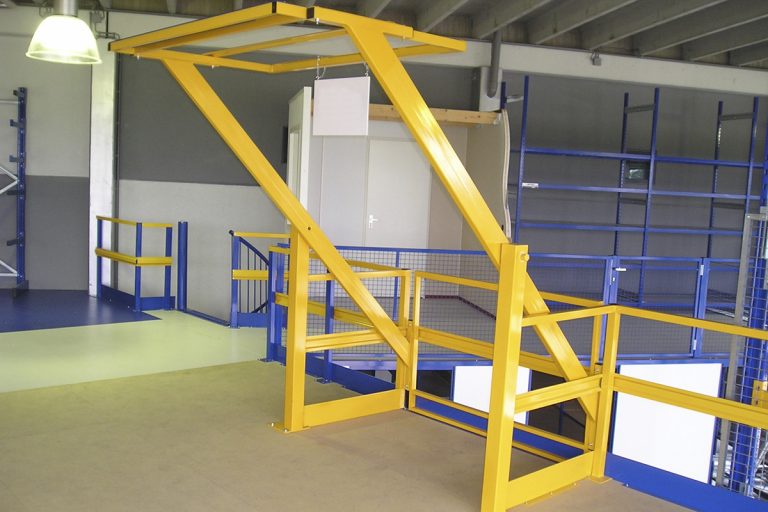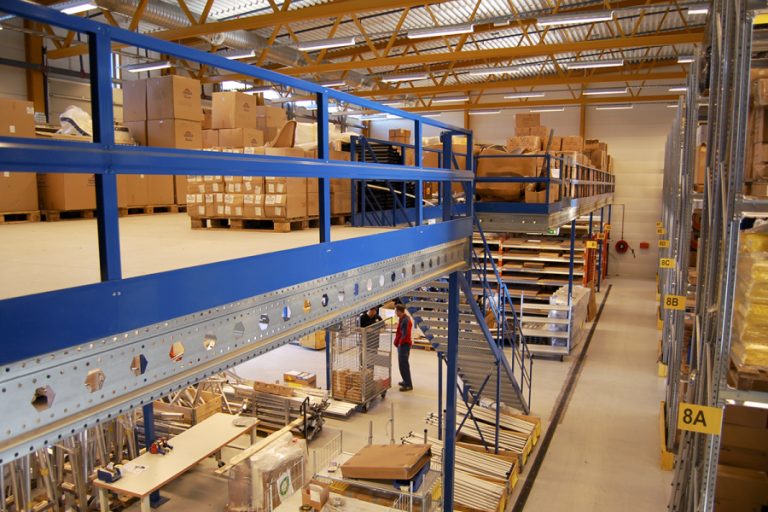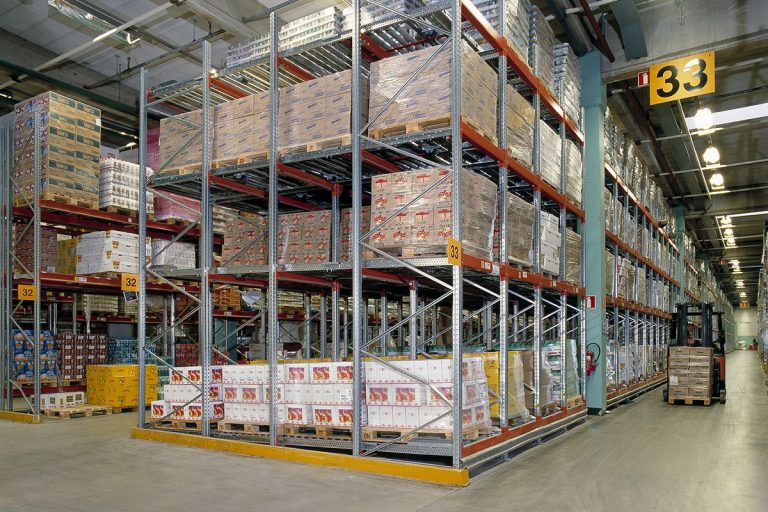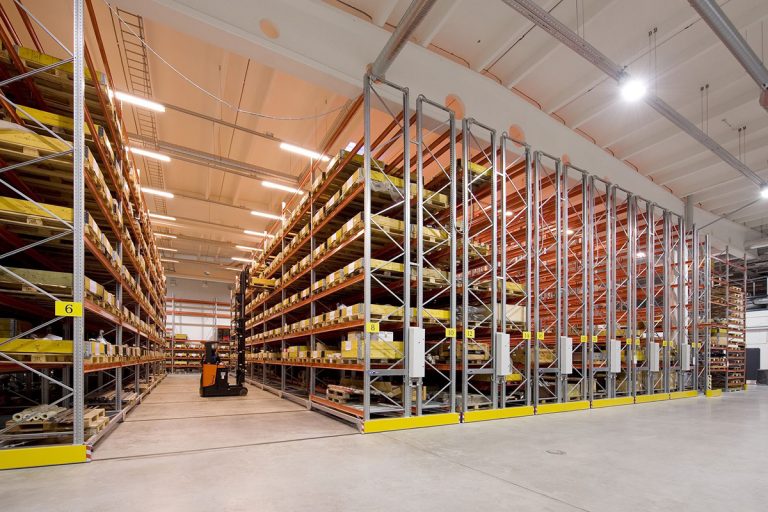Every inch of space counts, so maximising the use of your warehouse’s square footage can lead to increased efficiency, productivity, and profitability. But what if you’re running out of space and considering moving to a new warehouse? Moving can be costly and disruptive to your business, but there’s a solution that can save you money and the hassle of relocating: installing a mezzanine. Mezzanines are raised platforms that provide additional floor space in your warehouse, allowing you to create new storage space, repurpose existing space, or add new workspaces.
In this article, we’ll explore the positives and negatives of mezzanine installations, and how implementing a mezzanine can help you save on the cost of moving to another warehouse while maximising your current space.
Positives of Installing a Mezzanine Floor
- Increased Storage Space: A mezzanine floor can provide additional storage space in your warehouse, allowing you to make the most of your vertical space. This can increase your storage capacity without taking up valuable floor space.
- Creation of New Workspaces: Mezzanine floors can create new workspaces, such as offices or break rooms, by adding an additional level to your warehouse. This can free up valuable floor space and improve organization and accessibility.
- Cost Savings: Installing a mezzanine floor can save the cost of moving to a larger warehouse or expanding your current one. By using the available vertical space, you can increase your storage capacity without incurring the cost of a new building or additional land.
- Time and operational savings: By simply removing the need to expand or relocate to new premises will not only save time for many colleagues but maintain maximum operational efficiency.
- Increased Property Value: A mezzanine installation can increase the value of your property by adding additional square footage to your warehouse, making it a more desirable asset in the long run.
Negatives of Installing a Mezzanine Floor
- Upfront Costs: Mezzanine floors can be expensive to install, and the cost will depend on the type of mezzanine, the size of your warehouse, and other factors. Additionally, ongoing maintenance costs may also be required. Factoring all these costs into your ROI is paramount and start by gaining a number of quotes from installers. The design is also important and the designer should be able to provide a number of cost-related options.
- Building Codes and Permits: Installing a mezzanine floor typically requires obtaining building permits and meeting building codes. This can add additional costs and time to the installation process. A good installation company should be able to help you with all of these items, from documents to installation in line with regulations and standards.
- Disruption to Workflow: The installation process of a mezzanine floor can cause disruptions to your warehouse’s workflow, leading to downtime and decreased productivity. Ensure your installation company provides a plan to mitigate disruption including a phased plan and out-of-hours work schedule.
Is a Mezzanine Floor the Best Solution for Your Warehouse?
When selecting a mezzanine for your warehouse, there are several key factors to consider. Here are some of the most important considerations:
Purpose and Use
What will the mezzanine be used for? Will it be used for storage, production, or office space? Understanding the purpose and use of the mezzanine will help determine the size, weight capacity, and other requirements for the installation.
Available Space
How much available space do you have in your warehouse? The size and layout of your warehouse will determine the size and design of the mezzanine. Consider the height of your ceilings, the placement of existing equipment and structures, and any other space limitations.
Future Growth
Consider if your business is likely to expand in the future. If so, a mezzanine floor can provide the flexibility to adapt to future growth without incurring the costs of moving to a larger warehouse.
Building Codes and Regulations
What are the building codes and regulations in your area? It’s important to ensure that the mezzanine installation meets all safety and regulatory requirements. Make sure to work with a reputable mezzanine installation company that is knowledgeable about local building codes and regulations.
Load Capacity
How much weight will the mezzanine need to support? The load capacity of the mezzanine will depend on its purpose and use. For example, a mezzanine used for heavy equipment storage will need to have a higher load capacity than a mezzanine used for office space.
Accessibility
How will the mezzanine be accessed? Consider the location of stairs, elevators, and other access points to ensure that the mezzanine is easily accessible for employees and equipment.
To ensure that you select the right mezzanine for your warehouse, it’s important to work with an experienced and knowledgeable mezzanine installation company. Visit our website to learn more about our mezzanine installation services and schedule a consultation with our experts.
Does Your Business Need a Mezzanine
In conclusion, adding a mezzanine to your warehouse can provide a range of benefits for your business, including optimising space, creating new storage and work areas, increasing efficiency, and enhancing safety. By choosing the right mezzanine design and working with a professional installation company, you can maximise the use of your warehouse space and improve your operations.
If you’re considering adding a mezzanine to your warehouse, make sure to do your research and choose a reputable and experienced installation company. Schedule a consultation with their experts to determine the best mezzanine design for your business needs and to ensure that the installation is done safely and correctly.
To learn more about our mezzanine installation services and schedule a consultation with our experts. Don’t miss out on the opportunity to optimise your warehouse space and improve your operations.





















